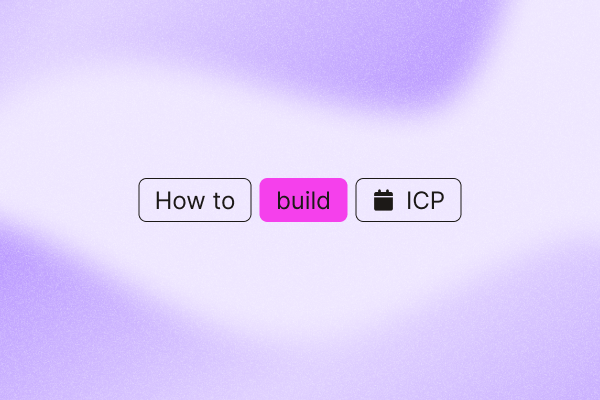ICP sales success starts with targeting the right companies and reaching your ideal target audience.
When you know who benefits most from your product, you can focus your efforts on where they’ll have the greatest impact.
This guide will show you how to build your ICP to enhance your lead-generation efforts and close more deals.
Overview
- An Ideal Customer Profile (ICP) outlines the kind of company that will benefit the most from your product and add the most value to your business.
- Creating an ideal customer profile improves your sales process, attracts better leads, and helps maintain long-term client relationships. It also aligns sales and marketing teams on target accounts and addresses customer pain points more effectively.
- Here’s a quick breakdown of the steps to build your ICP to improve your sales prospecting:
| Step | Description | Quick Tip |
| Identify valuable customers | Pinpoint your top customers based on revenue, retention, and satisfaction. | Focus on high-value, low-support clients for the best ROI. |
| Research best customers | Gather data on industry, size, challenges, and buying process. | Use AI to spot patterns and trends you might overlook. |
| Document your ICP | Build a clear profile with firmographics, pain points, and buying triggers. | Keep it short (1-2 pages max) to ensure sales teams use it. |
| Validate with teams | Collect feedback from sales and marketing to fine-tune your ICP. | Schedule quarterly review sessions to stay aligned. |
| Continuously refine | Update your ICP as your business evolves and markets shift. | Set up CRM alerts to spot new customers matching your ICP. |
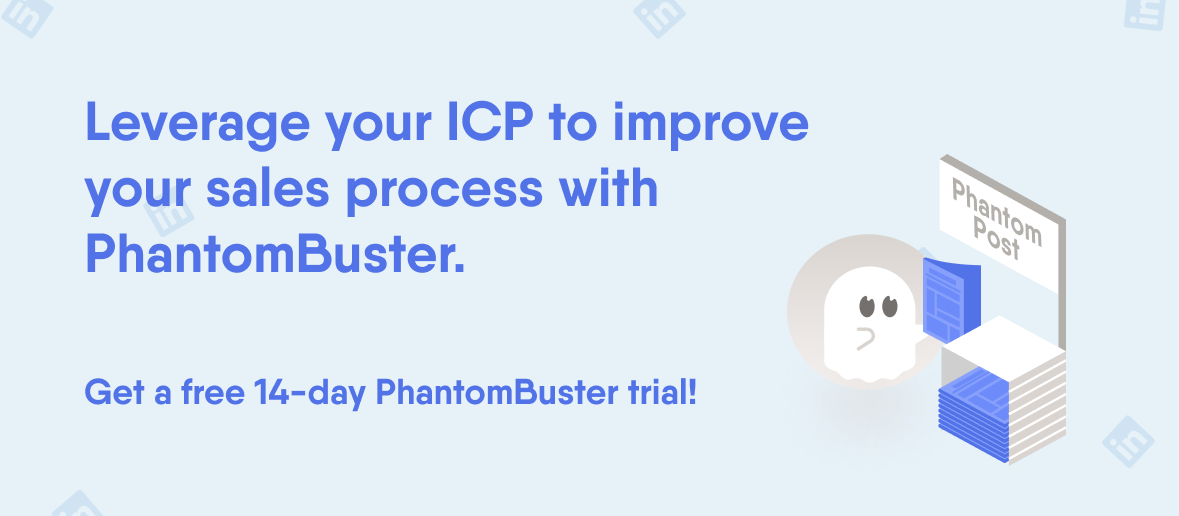
What is a sales ICP?
An Ideal Customer Profile (ICP) defines the type of company that will benefit most from your product and bring the highest value to your business.
Unlike buyer personas, which focus on individual decision-makers, an ICP looks at company-level attributes—industry, size, revenue, and key challenges—to identify the best-fit prospects.
A well-defined ICP helps your sales team focus on the right hot leads instead of wasting time on companies that aren’t a good match. This targeted approach improves sales productivity and increases conversion rates.
Why does your sales team need an ICP?
Here’s how creating an ideal customer profile will transform your sales process:
- Faster sales cycles: When you target companies that perfectly fit your solution, you eliminate friction in your automated sales pipeline, face fewer objections, and move through the sales process more quickly.
- Improved lead quality: Your marketing efforts attract more qualified prospects who match your ideal profile.
- Better resource allocation: Your sales team can prioritize accounts with the highest potential value.
- More relevant messaging: You can craft outreach that speaks directly to the specific pain points of your ideal customers.
- Lower customer churn: Companies that match your ICP are more likely to become successful, long-term customers.
- Better account-based marketing (ABM): A clear ICP helps you target high-value accounts more effectively and boost conversion rates.
- Stronger sales and marketing alignment: Both teams use the same playbook to target prospects.
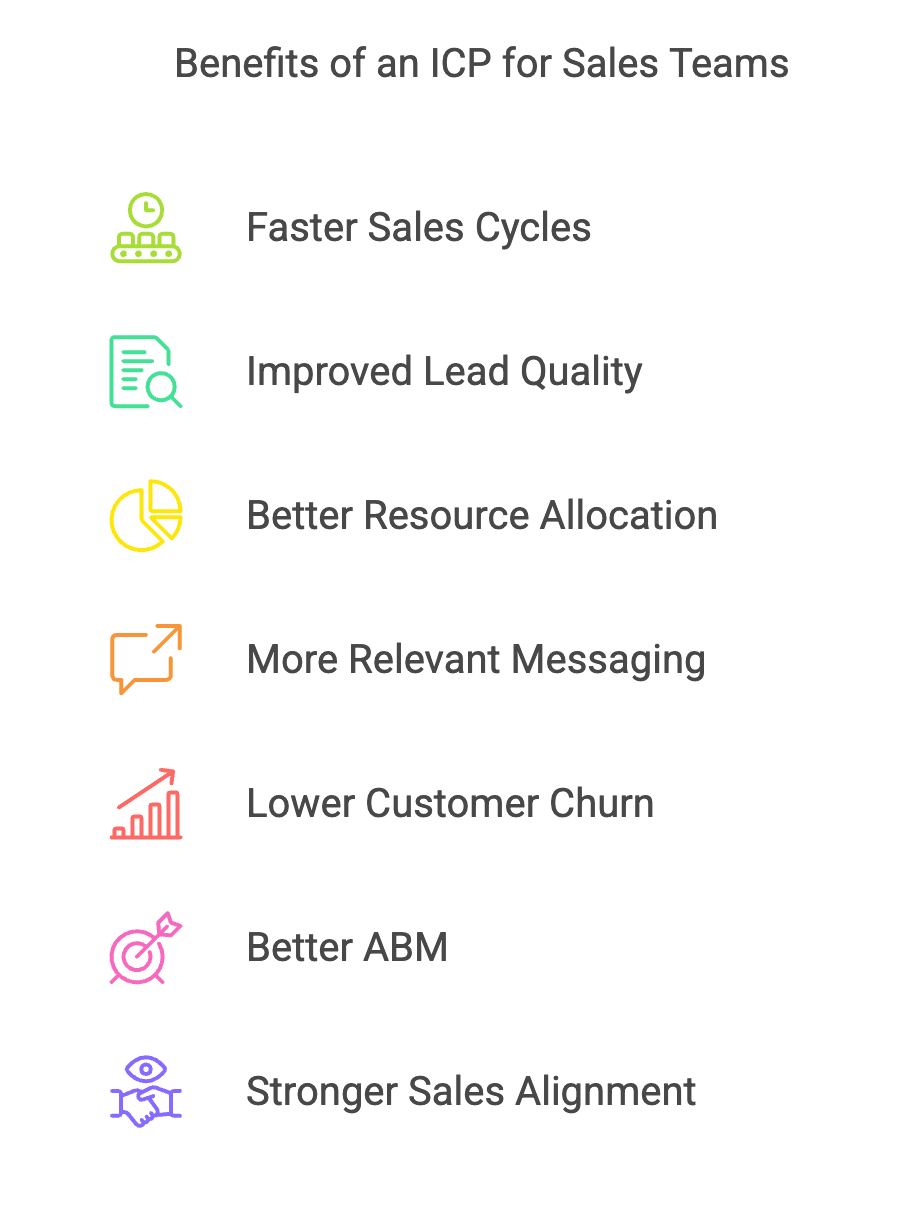
How to create a sales ICP?
Creating an effective ideal customer profile is essential for targeting the right audience and maximizing your sales and marketing efforts.
However, building an effective ideal customer profile requires a systematic approach.
Let’s break down the process into five practical steps.
1. Identify your most valuable customers
The first step is to identify who your perfect customer is.
As Satyam Sharma points out on LinkedIn, “Start with the customers you already have. Who are your best clients? Jot down their key characteristics—age, location, job title, etc.”
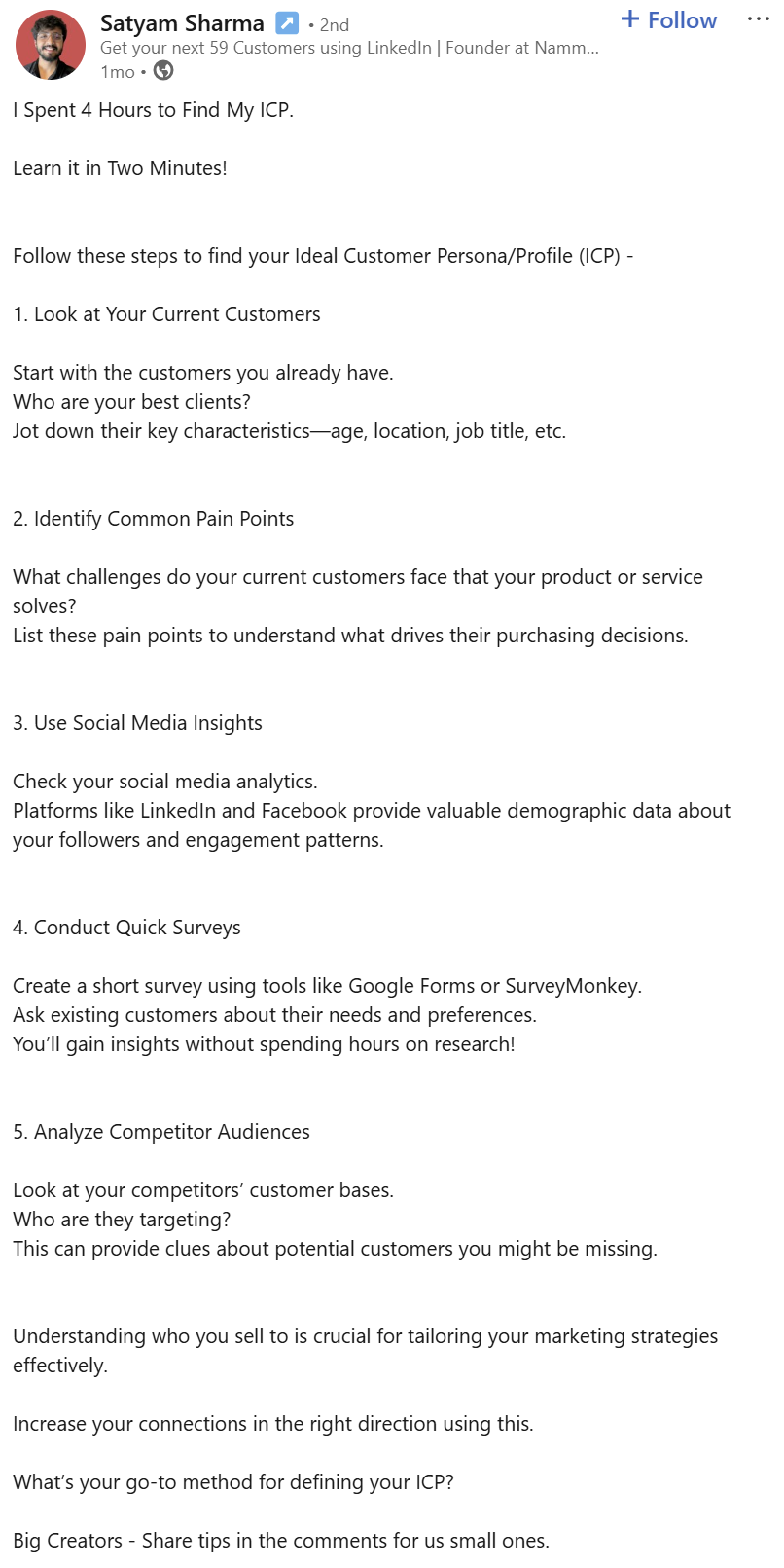
So take a closer look at your existing customer base and ask yourself who your superstars are.
These are the customers who:
- Generate substantial revenue.
- Stay with you for the long haul.
- Require minimal support.
- Actively refer new business.
- Implemented your solution quickly.
Pull up your CRM data and identify the top 10-20% of your customers based on these criteria. These are the companies you want to clone in your prospecting efforts.
This step is crucial because it’s based on real data, not assumptions. The time you invest here will pay dividends throughout your entire sales process.
💡 Pro tip: Don’t just look at who pays you the most. Sometimes, a mid-sized customer with minimal support needs and high advocacy is more valuable than a high-maintenance enterprise client.
2. Do some research into your best customers
Now that you’ve identified your top customers, it’s time to dig deeper and understand why they’re such a great fit.
Combine market research with direct conversations to uncover what makes these companies tick and why they’re such a good fit for your product.
Look for patterns across these dimensions:
- Industry: Are they clustered in specific sectors?
- Company size: What’s the typical employee count and revenue range?
- Geographic location: Is there a regional concentration?
- Tech stack: What other tools do they use alongside yours?
- Business challenges: What specific problems were they trying to solve?
💡 Pro tip: Ask an AI tool like ChatGPT to analyze your customer database and identify common patterns. For example, you might discover that your most successful customers are mid-sized healthcare companies with 100-500 employees and annual revenue between $10-50 million.
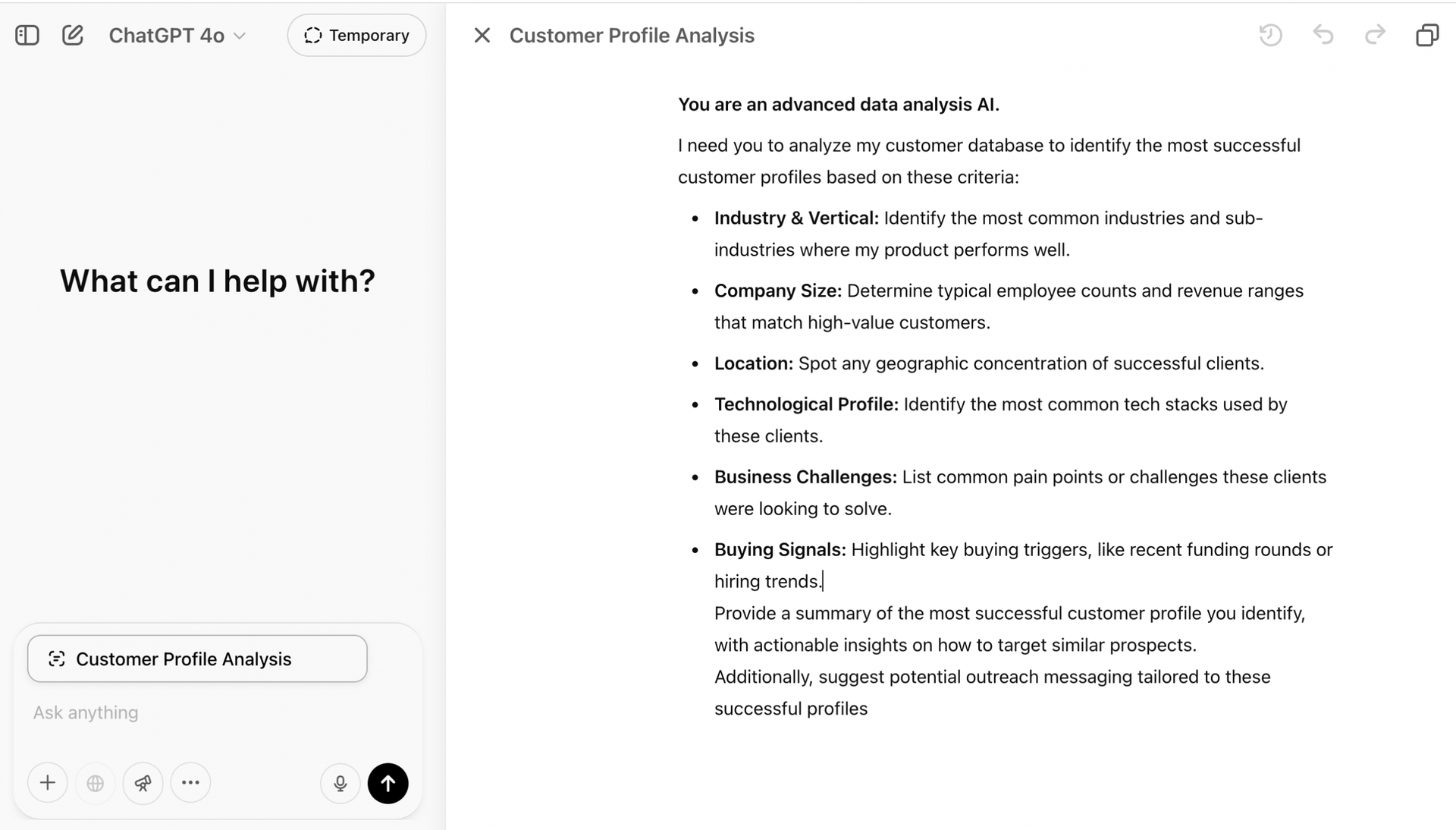
3. Document your sales ICP
It’s time to turn your research into a practical reference document your sales and marketing teams can use. Keep it concise, as no one wants to read a 20-page manifesto.
Create a one-pager that includes:
- Firmographics: “SaaS companies with 50-200 employees and $5-50M annual revenue.”
- Tech indicators: “Uses HubSpot CRM and LinkedIn integration.”
- Pain points: “Struggling with lead quality and long sales cycles.”
- Buying triggers: “Recently raised funding or hired new VP of Sales.”
- Decision-makers: “Head of Marketing or Revenue Operations.”
- Budget considerations: “Annual contract value between $10K-$50K, with a preference for annual upfront payment over monthly billing.”
- Success factors: “Companies with a dedicated operations team and clear KPIs for measuring ROI from your solution within the first 90 days.”
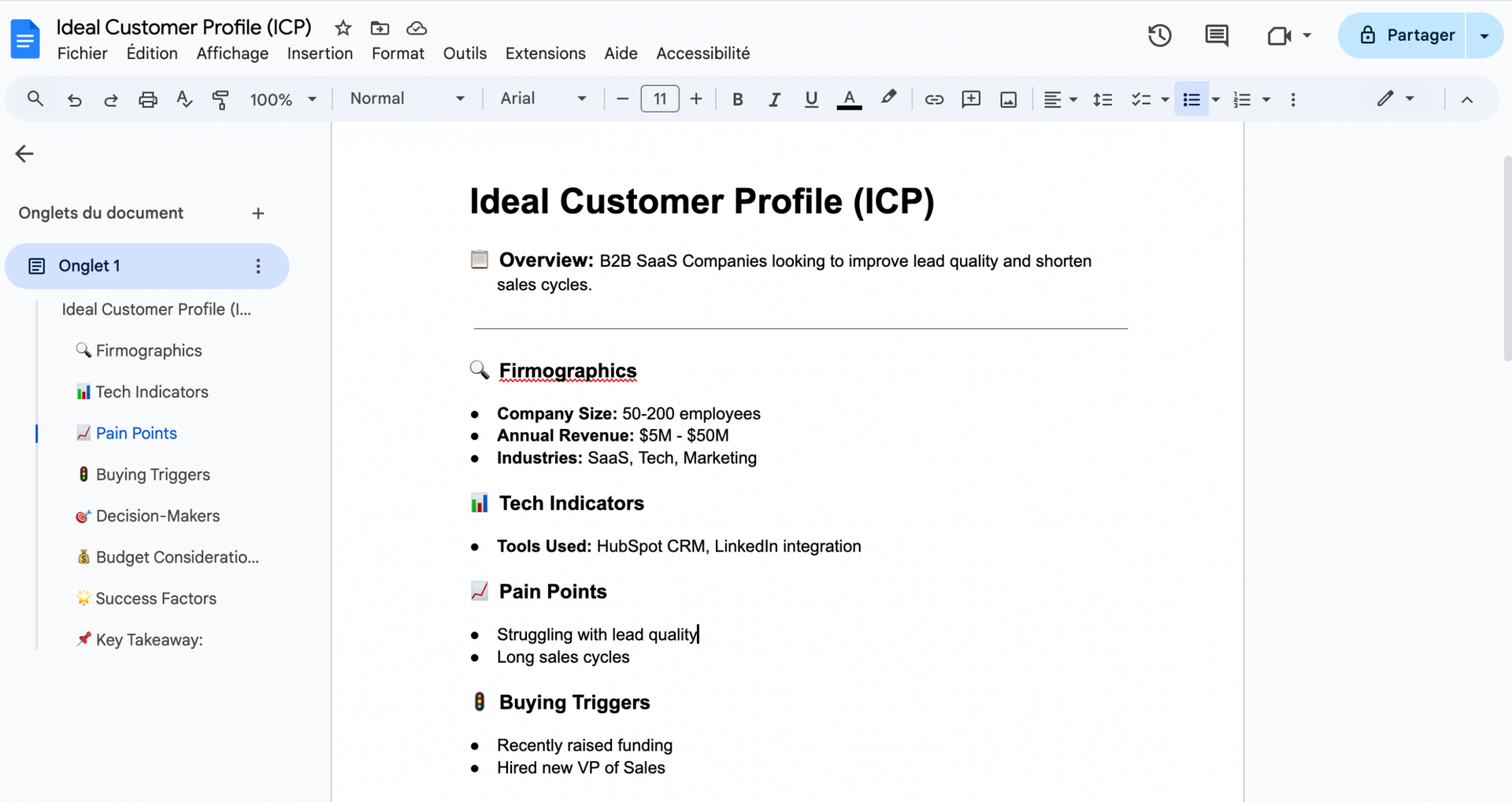
Make this document visual and easy to scan. Your sales team should be able to glance at it and immediately understand who they should target.
💡 Quick tip: Share this document somewhere accessible, such as a Notion page, Google Doc, or directly in your CRM. Then, organize a dedicated session to present it to your team.
4. Validate your ICP with your sales and marketing teams
Your ICP isn’t worth much if your teams don’t buy into it. Get your sales and marketing people in a room (virtual works, too) and ask:
- Does this profile match the companies you’ve had the most success with?
- Is there anything missing that you’ve noticed in successful deals?
- Can you identify these companies easily during prospecting?
Your sales reps will quickly tell you if your ICP is too theoretical or missing key elements.
Marketing needs to weigh in, too, since they’re also responsible for generating leads that match this profile. If they can’t effectively target companies with these characteristics, your ICP needs adjustment based on this feedback.
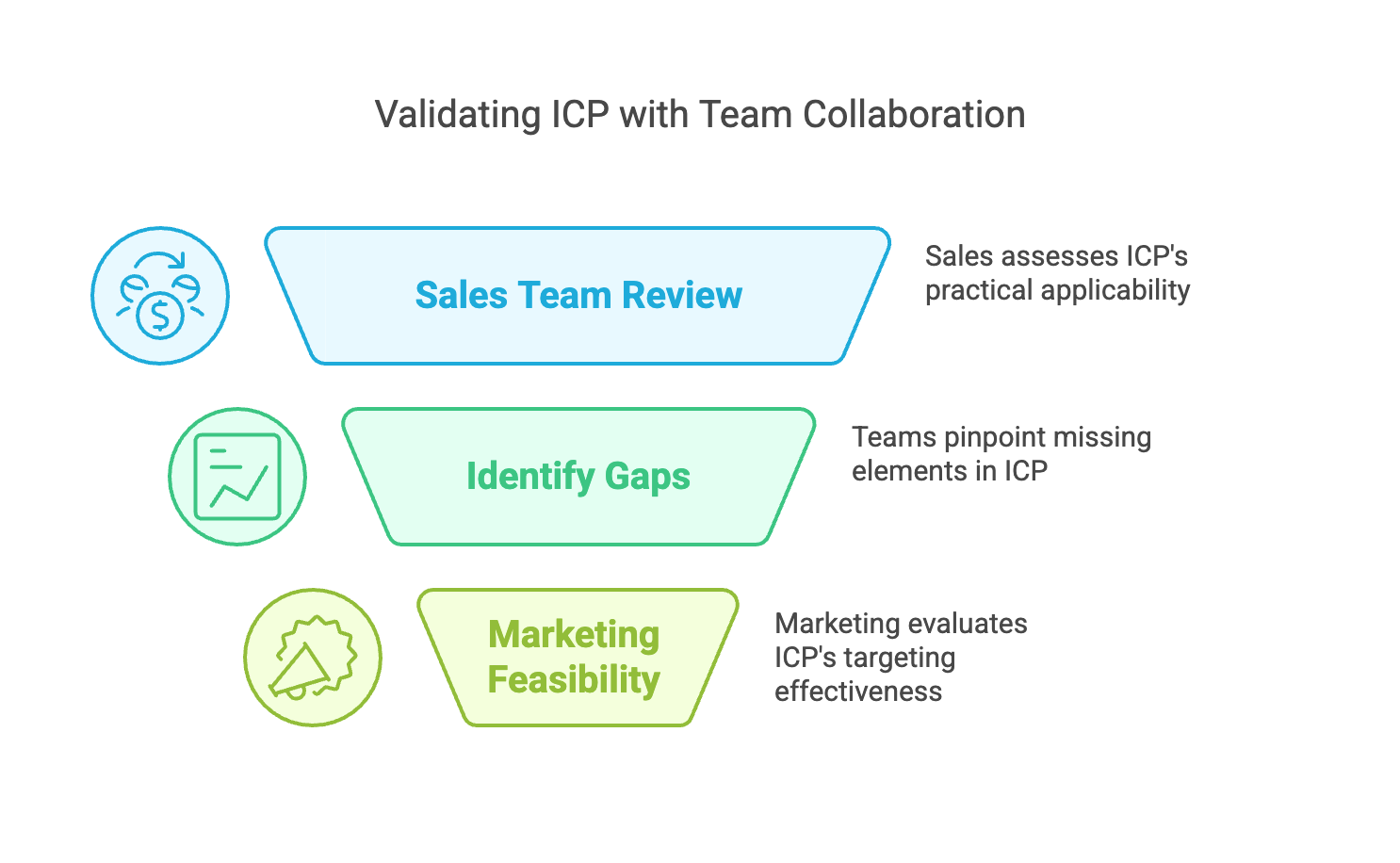
💡 Pro tip: Create a quick ICP validation workshop where sales and marketing teams review 5-10 recent deals together. Have them identify which deals matched your ICP and which didn’t, then discuss the outcomes.
5. Continuously refine your ICP
Your ICP isn’t a set-it-and-forget-it document. Markets change, your product evolves, and what made a great customer last year might not be the same today.
Set a calendar reminder to review your ICP quarterly and conduct a sales pipeline analysis to identify bottlenecks in your lead conversion process.
Look at:
- New customers who’ve become successful: Do they match your ICP?
- Customers who’ve churned: Were they outside your ICP?
- Changes in your product: Do they appeal to different companies?
- Shifts in your market: Do they create new sales opportunities?
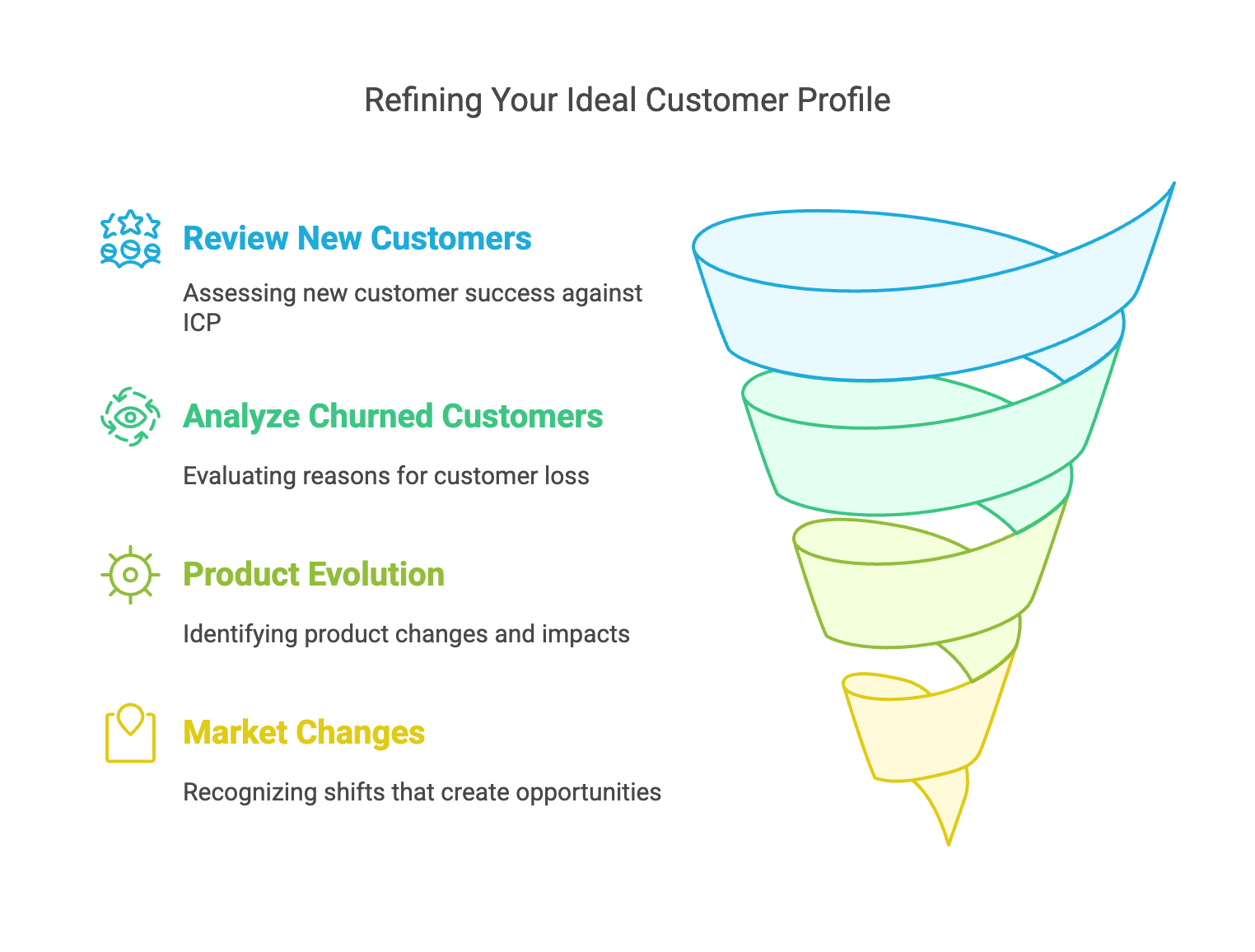
Don’t be afraid to adjust your ICP as you gather more data. The most successful companies treat their ICP as a living document that evolves with their business.
Using your Ideal Customer Profile to boost your sales process
Once you’ve created a solid ICP, it’s time to implement it.
Here’s how to leverage your ICP to improve sales prospecting automation and drive better results.
Build dedicated prospect lists
With a clear and well-defined ICP, you can now focus on lead sourcing to quickly build laser-focused prospect lists instead of generic industry targets.
PhantomBuster’s LinkedIn Search Export automation makes this super simple. It lets you extract leads from LinkedIn based on specific search criteria, filter results to match your ICP parameters, and export data to create organized prospect lists.
For example, if your ICP includes SaaS companies with 50-200 employees, you can:
- Create a LinkedIn search with these exact filters.
- Use LinkedIn Search Export to extract all matching companies.
- Export the data to create your targeted prospect list.
- Assign these high-potential accounts to your SDRs.
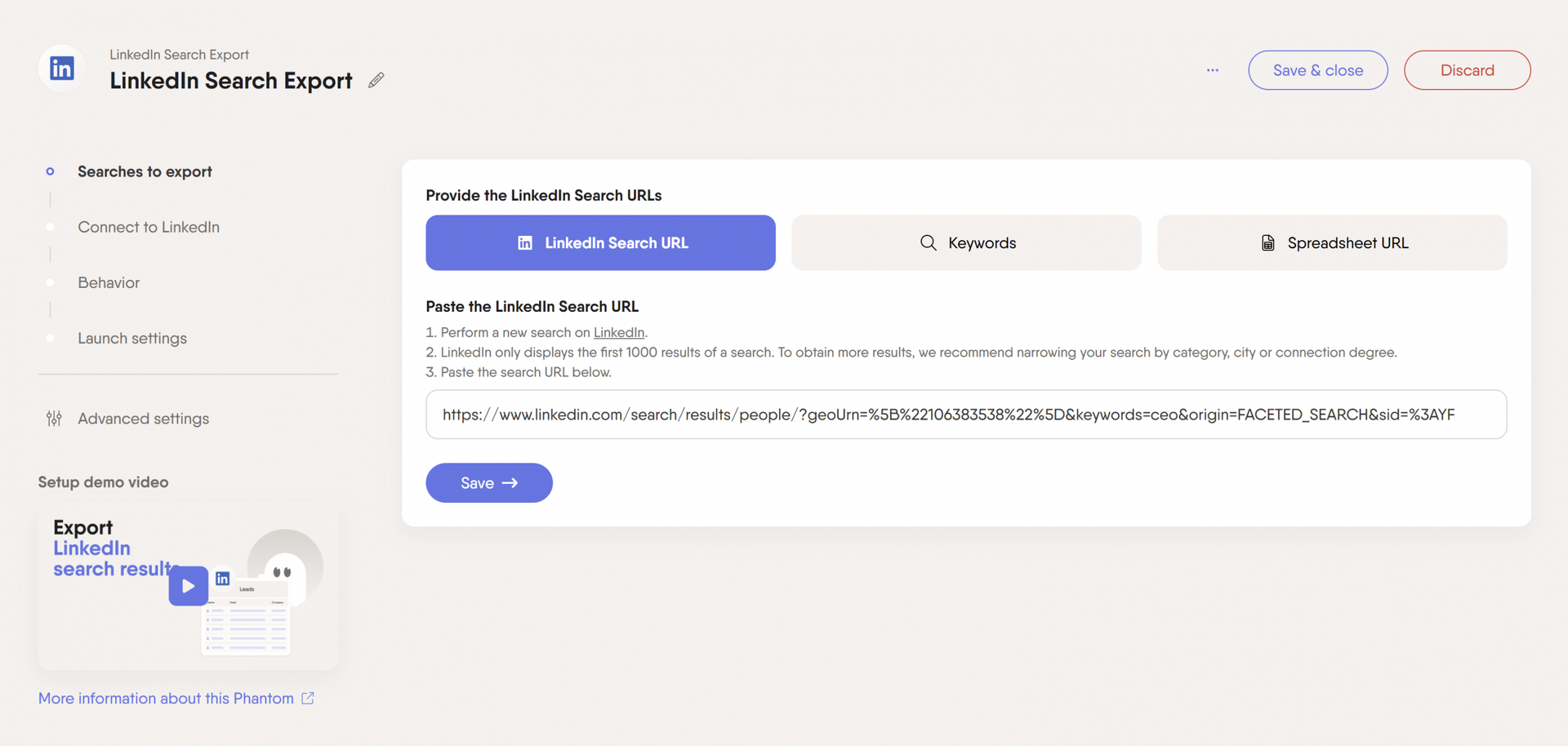
This approach is more effective than buying lead lists or manually searching for prospects. It improves lead quality but also increases pipeline velocity.
Identify key buying signals for your ICP
For successful outbound prospecting, identifying buying signals is crucial. They let you know when your ICP is ready to engage. Here are the most common ones:
- Job changes: A new VP of Sales might want to implement new tools.
- Funding announcements: Fresh capital often means new tech investments.
- Office expansions: Growth creates new operational challenges.
- Content engagement: Downloading relevant whitepapers signals interest.
- Competitor mentions: Researching alternatives suggests dissatisfaction.
We recommend using PhantomBuster’s HubSpot Contact Career Tracker to automatically track career changes among your contacts and alert you when contacts move to new companies.
![]()
When a contact from your ICP list changes jobs, send them a simple note:
Congrats on the new role! As you build your tech stack, I’d love to show you how [Your product] could help with [Specific challenge from your ICP].
Qualify your contacts using lead scoring
Not all prospects that match your ICP are equally ready to buy. Lead scoring helps you prioritize the hottest prospects.
Try PhantomBuster’s AI LinkedIn Profile Enricher automation to take lead qualification to the next level. It analyzes LinkedIn profile data using advanced AI algorithms and assigns lead scores based on ICP fit.
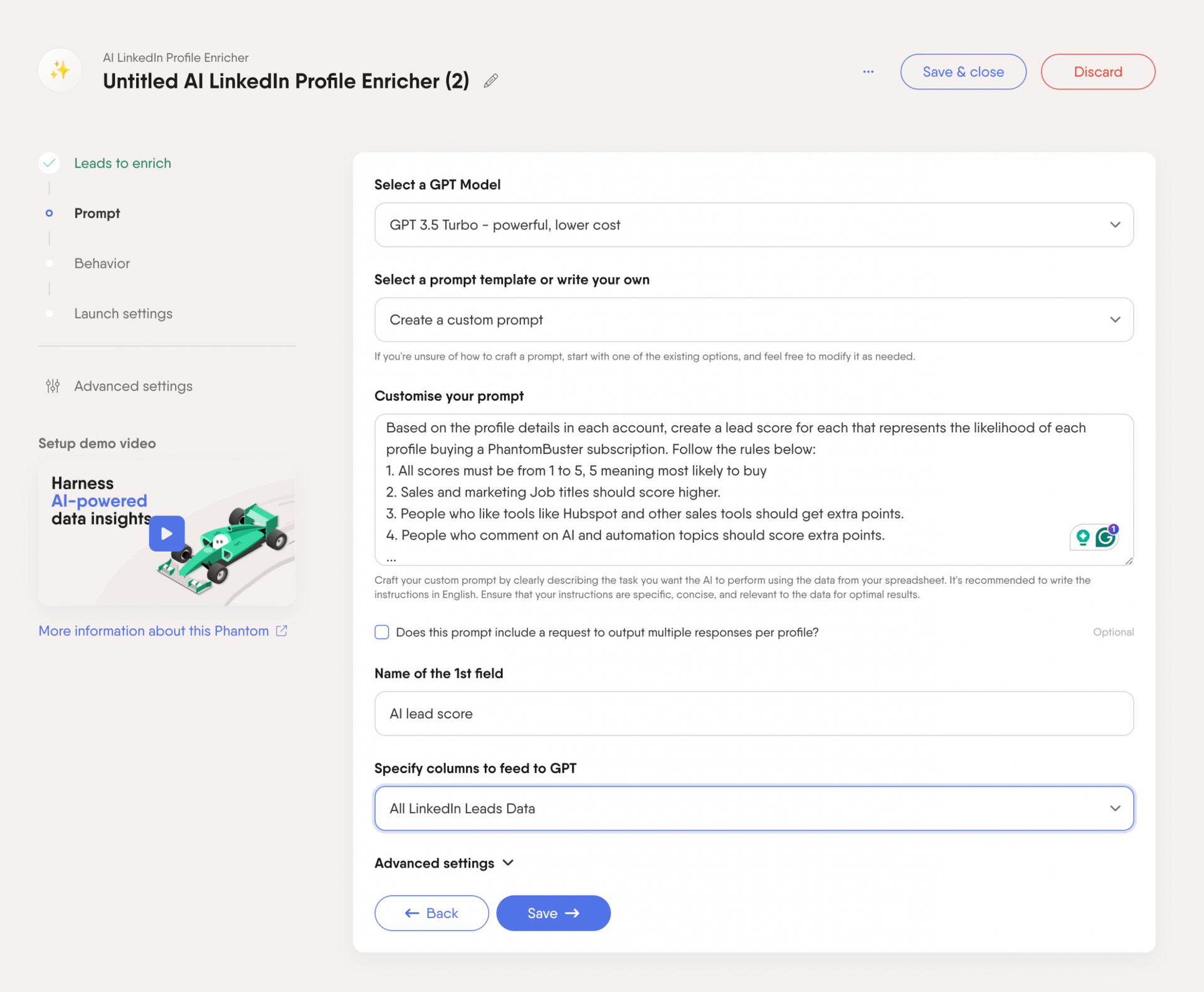
💡 Set up a simple scoring system, such as:
+10 points for matching industry
+5 points for the right company size
+15 points for specific pain points
+20 points for recent buying signals
Focus your outreach on leads with the highest scores first, and leverage sales acceleration tools to automate follow-ups and shorten the sales cycle.
This AI lead-qualification process guarantees your sales team spends their valuable time on prospects most likely to convert.
Personalize your outreach
Generic messages are often ignored. Your ICP gives you the insights needed to craft a personalized sales and marketing strategy that generates responses.
Using AI prompts for lead generation, PhantomBuster’s AI LinkedIn Message Writer helps your sales team craft personalized outreach.
It uses generative AI to create customized messages based on LinkedIn profile data, tailoring content to address specific pain points from your ICP. Plus, it helps save a lot of time when writing messages while maintaining personalization.
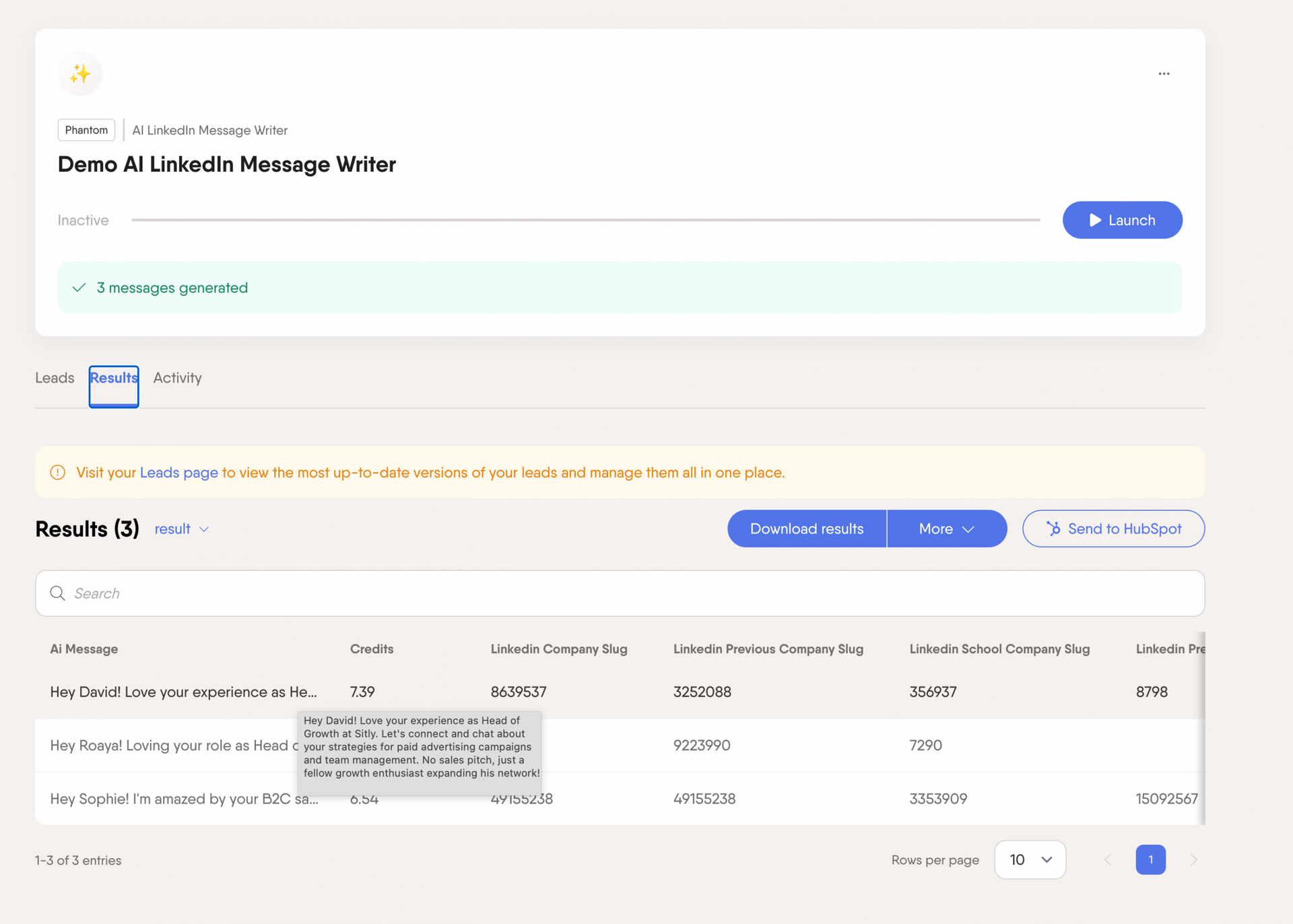
For example, if your ICP reveals that companies struggle with lead quality, your outreach might say:
I noticed [Company] is scaling its sales team, and I wondered if you’re facing challenges with lead quality like many other [Industry] companies your size. We’ve helped similar businesses increase qualified leads by 40% in just 60 days.
This approach shows you understand their specific challenges and have helped similar companies, a more compelling message than a generic sales pitch.
ICP sales FAQ
Sales ICP vs. Buyer persona: Key differences
People often confuse ICPs with buyer personas, but they serve different purposes in your sales pipeline and sales funnel:
| Aspect | Ideal Customer Profile (ICP) | Buyer Persona |
| Focus | Company-level attributes | Individual-level characteristics |
| Purpose | Identify which companies to target | Understand how to communicate with individuals and decision-makers |
| Key Elements | Industry, company size, revenue, tech stack | Job title, goals, challenges, decision-making role |
| Primary Use | Account targeting and qualification | Message crafting and content creation |
| Scope | Broader organizational fit | Specific individual needs and preferences |
Think of it this way: Your ICP helps you find the right B2B leads, while buyer personas help you connect with the right people within those companies. You need both for a complete targeting strategy.
Key elements of an effective ICP
A comprehensive ICP includes several critical elements that help your sales team identify and qualify leads, such as:
- Firmographics: Industry, company size, annual revenue, location.
- Technographics: Technology stack, software usage, integration needs.
- Pain points: Specific challenges your solution addresses.
- Buying triggers: Events that prompt purchase consideration.
- Decision-making process: Approval chain, timeline, budget authority.
- Success indicators: Factors that predict customer success with your product.
The more specific and data-driven these elements are, the more effective your ICP will guide sales efforts.
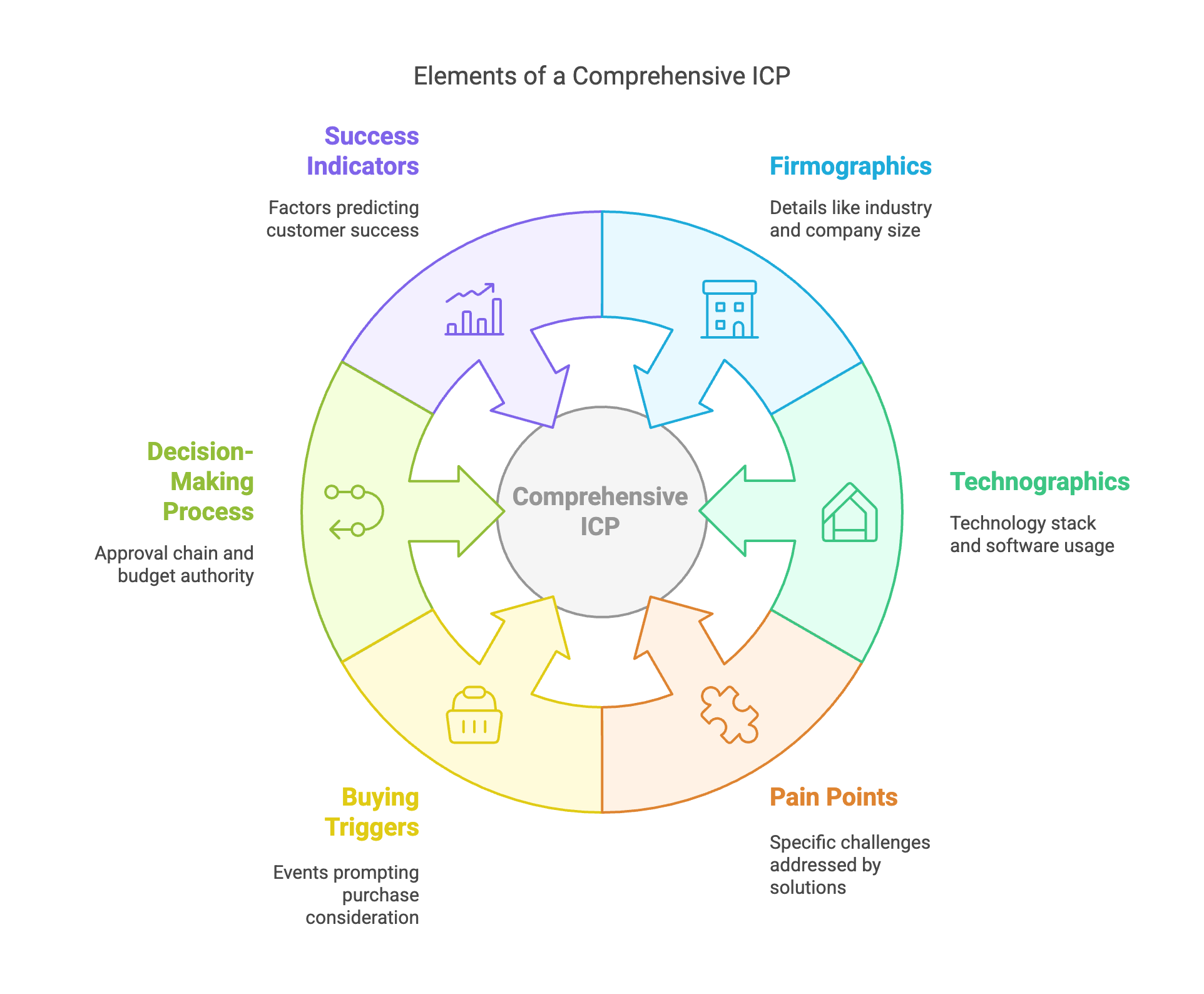
How often should I update my ICP?
Your ICP isn’t set in stone. Plan to review it quarterly for minor adjustments, annually for comprehensive updates, and immediately after significant product changes or market shifts.
Watch for these triggers that signal it’s time for an update:
- New product features that appeal to different customer types.
- Changes in your competitive landscape.
- Shifts in your target market.
- New data revealing different success patterns.
- Business strategy pivots.
Regular reviews ensure your sales team always uses the most current and accurate ICP sales strategy.
Can I have more than one ICP?
Absolutely! Many companies have multiple sales ICPs, especially if they offer different products or services, target distinct market segments, operate in various geographic regions, or serve companies at different growth stages.
💡 For example, a B2B sales tool company might have separate ICPs for their enterprise solution and their SMB offering. The enterprise ICP might focus on large companies with complex needs and longer sales cycles, while the SMB ICP targets smaller companies with simpler requirements and faster decisions.
Make sure each sales ICP is clearly defined and that your sales and marketing team knows which applies to which situation. Multiple vague ICPs create confusion rather than clarity.
How to measure sales ICP effectiveness?
The proof is in the results. Track these metrics to see if your ICP is optimized:
- Conversion rates: Do ICP-matched prospects convert at higher rates?
- Sales cycle length: Are deals with ICP companies closing faster?
- Customer acquisition cost: Is it cheaper to acquire ICP-matched customers?
- Customer lifetime value: Do these companies generate more revenue over time?
- Retention rates: Do ICP-matched customers stay longer?
- Deal size: Are these companies spending more initially or over time?
Compare the performance of prospects who match your ICP versus those who don’t. The difference will tell you how effective your targeting is. And don’t forget qualitative feedback, too, as your sales reps’ front-line experience provides valuable insights that numbers alone can’t capture.

